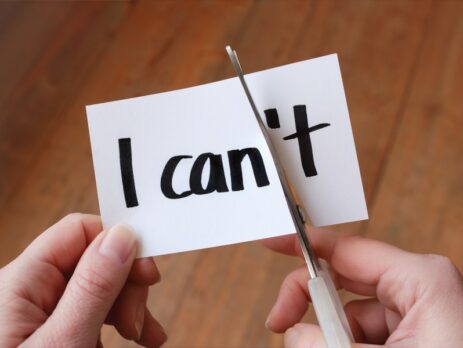 6 Steps to Enjoy Some Healthy Mindful Walking
6 Steps to Enjoy Some Healthy Mindful Walking
With a New Year in front of us, many make the commitment to starting a healthier lifestyle, maybe changing their diet, sleeping habits or taking up yoga… but sometimes it’s best to start with something simple.
Something just about everyone can manage, is a nice, easy walk!
But combine that with some mindfulness and you have “Mindful Walking”.
The benefits of walking are extensive & proven — a consistent walking routine can improve cardiovascular fitness, reduce the risk of heart disease, lose weight, and help manage hypertension, high cholesterol and diabetes. Additionally, mindfulness can decrease stress, curb cravings and improve energy levels. When combined, you have mindful walking — a practice that supports both mental and physical health.
MINDFUL WALKING and BENEFITS
Mindfulness is about being present in the moment and bringing awareness to any given activity. Rather than focusing on how many miles you have to go or a pace you need to hit, mindful walking is about paying attention to your body and being more aware of nature and your surrounding environment. Focusing on your breath, how your body feels and moves, the cool breeze against your face, and the way your arms and legs work in unison to balance and propel you forward are all aspects of mindful walking. Paying closer attention to these things can aid your performance and improve your health.
LIKE WHAT?
Improved mood: Research shows mindful walking over multiple days can reduce psychological ailments like depression and anxiety, while also boosting overall mood.
Lower stress levels: Chronic stress can lead to negative long-term health consequences such as weight gain, digestive problems and heart disease. Research found mindful walking can alleviate psychological stress; people who spent 10 minutes of mindful walking (and 40 minutes of walking total) eight times over four weeks reported a reduction in symptoms of psychological distress and improvements in overall quality of life.
A stronger mind-body connection: By focusing on your movement, breathing and how you feel during walks, you’ll improve the mind-body connection. This relationship can help you learn when you can push yourself harder, and when you need to back off to avoid an unnecessary injury.
Improved performance: By focusing on what you’re doing instead of relying on distractions to get you through your workout, you’ll be more likely to concentrate on achieving your goals. Research shows visualization is an important tool for elevating your performance.
A FEW HELPFUL TIPS BEFORE YOU GO ?
Learning to be mindful during your walks takes patience and practice, but these tips can help you succeed. Incorporate at least one mindful walk per week and build from there.
- HAVE PURPOSE ?♂️
Having a pre-walk goal can also be a good way to remind yourself of what you want to accomplish and keep you motivated. This can be fitness-related, such as losing weight or building strength, or it can be something as simple as being grateful for the ability to be outside and enjoy nature while exercising. Similarly, setting goals related to perfecting your form, improving your breathing technique or even adopting a more positive mental outlook can help you get more from your workout and up your performance. What’s more, research shows sharing your goals with others can help you achieve them faster.
- PICK A QUIET ROUTE ?
While it’s not mandatory, a quiet trail, park or another serene environment helps, especially if you’re the type of person who is easily distracted. Spending more time in nature is linked to reduced stress levels, so take the time to notice what the trees look like, smell the fresh scents and seek out any wildlife or details you might otherwise have missed.
- SINGULAR FOCUS ?
It can be easy to let all the things you want to do (or your growing to-do list) cause extra stress. To prevent your thoughts from wandering, practice being mindful of one thing at a time. Take turns focusing on something like nature (the green trees, the shining sun) or something more workout-specific, like your arm swing or cadence.
- KEEP YOURSELF ON TRACK ?
Being in a hurry to finish a workout is common, particularly when you have other obligations. Here are a few things you can do while you walk to refocus if you’re having trouble clearing your mind:
Focus on something simple. This could be your feet touching the ground or how your weight shifts side-to-side. Another option might be to think about your posture, walking upright with an engaged core, and how this feels different from when you’re tired and tend to hunch over.
Pay attention to one of your senses. In particular, focus on one you might commonly ignore, like what you can hear or smell. Don’t let something unpleasant such as traffic bother you either, as being aware is what’s most important.
Remember to breathe. One of the simplest ways you can center yourself and be in the moment is to remind yourself to breathe. Concentrating only on the inhales, exhales and how the air moves through your body connects you with the activity and the environment in ways you might not realize.
- ENJOY THE SOUNDS OF NATURE ?
Yes, you may have a workout here and there when you’ll benefit from music, a podcast or another distraction to power you through. While this is OK some of the time, counting on distractions for the majority of your walks can ultimately hurt your performance. When practicing mindful walking, you’ll want to be engaged with how you feel, the efficiency of your stride, and creating calmness in the body. Blasting music or zoning out over details of what you’ll need to get done at work the next day makes this next to impossible. Pick at least two days per week to walk without distractions and see how you feel.
- PRACTICE GRATITUDE ?
Once your walk is finished, take time to think about all the positive things you’ve gained from your workout. Notice how good you feel and congratulate yourself for doing something positive for your health and well-being. Stretch any sore or aching muscles and give a little extra attention to any areas that didn’t feel quite right during your walk by icing or foam rolling. Being in tune with your body and recognizing what you need to keep pushing forward tomorrow helps you stay in a positive mind frame.



















